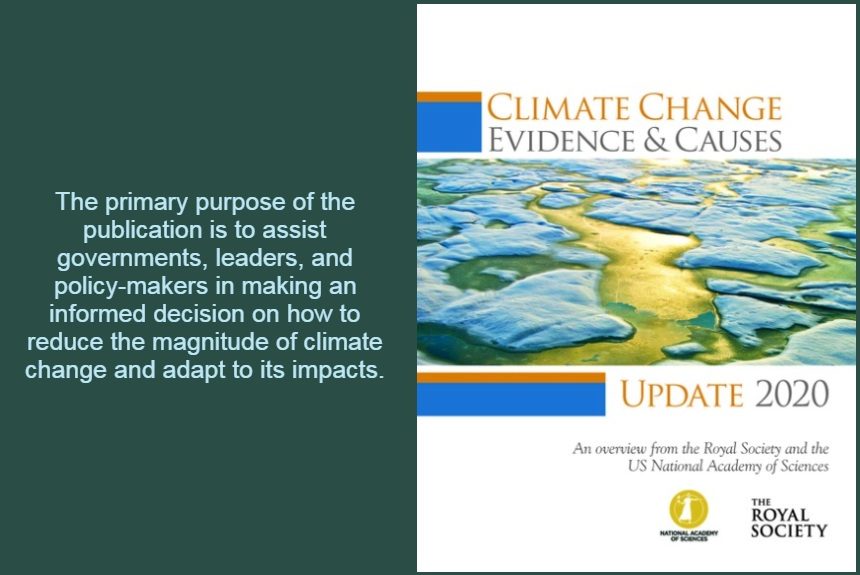Climate change has been a controversial subject of public debate since the term has become popular recently.
However, the mechanisms behind climate change are not new at all. Since the early 1800s, scientists have observed that carbon dioxide and greenhouse gases in the atmosphere work to insulate the Earth and cause warming (Climate Change History, 2020).
The Royal Society and the US National Academy of Sciences have published a 2020 updated version of Climate Change Evidence and Causes – the original came out in 2014.
The updated version contains the most recent climate data, and scientific analyses underpin the fact that human activities cause climate change. Its long-term effects depend on the GHG and CO2 we release into the atmosphere.
The updated version shows that carbon dioxide and GHG emitted by and through human activities since the start of the Industrial Revolution are increasing, and concentrations have doubled since the 1970s, resulting in a 1°C increase in global temperature since 1990.
The effects are observed through ocean warming, rising sea levels, declines in Arctic sea ice, intensity and frequency of heatwaves and other extreme natural events.
The document explains “that there are well-understood physical mechanisms by which changes in the amounts of greenhouse gases cause climate changes” and the evidence that concentrations of these gases are still increasing at a rapid rate due to GHG emissions by human activity.
If emissions remain unabated, then changes – events that far exceed those that have happened before will occur and will adversely impact human activities, infrastructure, and the ecosystem, the book reiterates.
The choice is up to us, and there are several options offered in response to the information provided in the document:
- We can change the pattern of energy production and usage to limit emissions;
- wait for changes to occur and accept losses, damages, and sufferings it entails;
- we can adapt the best we can and perhaps
- implement unproven geoengineering solutions to mitigate the effects of climate change;
- or do a mixture of these options above, each with risks, costs, and opportunities.
The reality is that vulnerability and adaptive capacities vary significantly for every country. Not all have the opportunity or resources to choose all or any options. For some nations, the impending threat is overwhelming – think of low-lying atoll states that are in danger of disappearing due to rising sea levels.
The primary purpose of the publication is to assist governments, leaders, and policy-makers in making an informed decision on how to reduce the magnitude of climate change and adapt to its impacts.
Countries that are most vulnerable to climate change control a few of the emissions, either past or present.
To read the full document, click on the link below:
Source
Climate Change History. (2020, April 20). History. Retrieved from https://www.history.com/topics/natural-disasters-and-environment/history-of-climate-change
National Research Council 2020. Climate Change: Evidence and Causes: Update 2020. Washington, DC: The National Academies Press. https://doi.org/10.17226/25733.



Leave a Reply